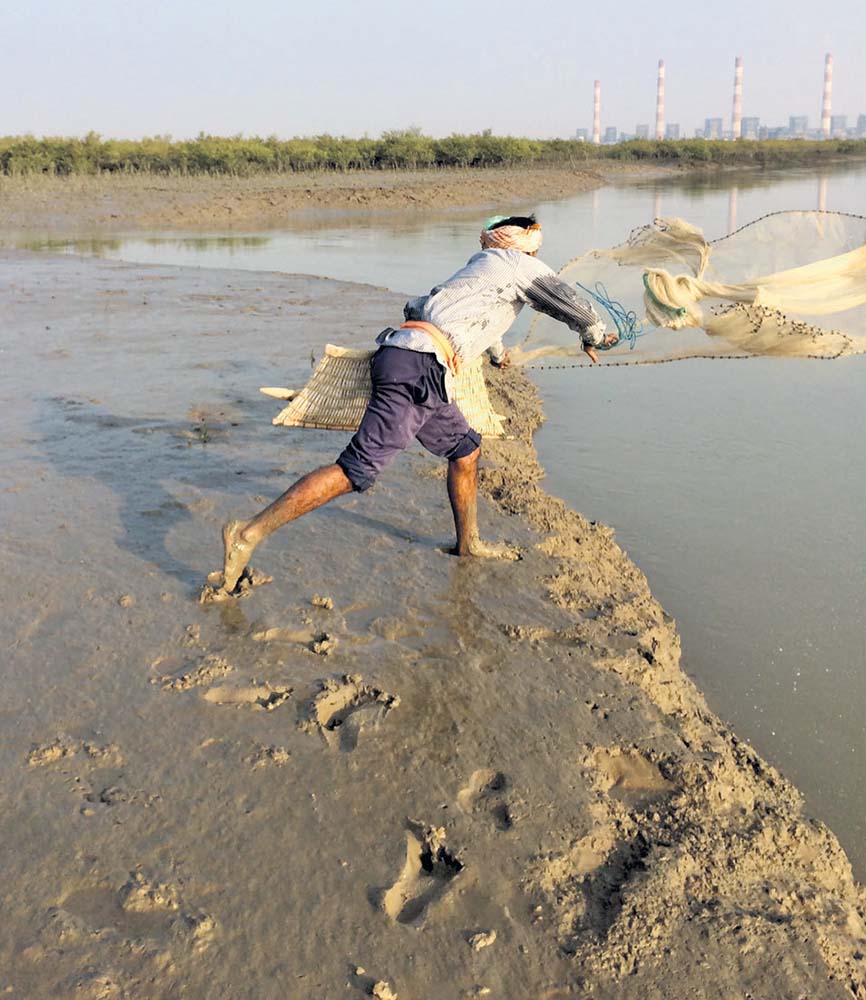Challenging State Representations from Coastal Environments in the Gulf of Kutch, Western India
Blurry land-water spaces have long generated fiery contests along the South Asian coastline, unsettling and reconfiguring the very definition of the coast. I focus on one such contest in the Gulf of Kutch, Western India, against the Arabian Sea, where India’s largest private port has been under construction since the 1990s. Celebrators of the port present it as a model for high-tech port building, a beacon for India’s entry into the 21st century. Opponents present the mega-port as activating rampant destruction of the Indian coastline, as representing an industrialized noose around India’s neck. The Gulf of Kutch has thus emerged as a prominent theater of contest between nature conservation, small livelihoods, and mega-development.
The multi-commodity port project stretches over 6000 hectares. It needs vast tracts of coastal land for oil tankers, warehouses, containers, and a whole host of logistical operations to handle gigantic volumes of trade. Government-led cartographic efforts to designate coastal land as “wasteland,” therefore, have been crucial to the creation of the port enclave. A spectacular intertidal zone has been classified as government wasteland. This unique zone stretches five kilometers from sea into land. During the maximum high tide, seawater comes five kilometers inwards into land, creating this unique intertidal zone. The state government maps it as swampy and dirty. But the same intertidal area also hosts India’s second largest mangroves, which are breeding grounds for fish, fodder for livestock, and fuelwood for coastal dwellers. Beyond this intertidal area, stretches with seasonal vegetation– where goats, sheep, and cattle grazed –are also classified as government wasteland.
Such legal and geographic classification of the coast as wasteland visually erases diverse lives and livelihoods. It makes possible coastal acquisition for the mega-port project. Port developers are thus able to justify their existence on the grounds that the port is productively transforming degraded wasted spaces – watery intertidal areas as well as dry areas – into a thriving hub of global international trade. Thus, since the very beginning of the port project, local coastal dwellers have experienced how government actors shape and mediate industry’s appropriation of land.
It is no wonder, then, that after 20 years of living with these transformations, the dwellers are suspicious of government activities to officially represent the coast. As recently as August 2018, the government was attempting to remap the Kutch coastline. An important part of this remapping was holding a public consultation with stakeholders who were directly impacted by coastal remapping. The goal was to fix the boundaries between different spatial units of the coast. Government officials swooped into Kutch to hold a meeting with the coastal dwellers to confirm whether the provisional maps they created matched local visions of the coast. In this public meeting, a range of coastal dwellers – fishers, farmers, livestock keepers – came together to challenge state-led bureaucratic conceptions of coast.

Fig. 1: Fishing in the intertidal port ecologies of Gulf of Kutch (Photo by author, 2017).
They were outraged by the reductive representations offered of the coast in the provisional government maps – the reduction of dense mangrove clusters to fixed lines, the reduction of the coast to swamp. “You’ve shown the mangroves in a line, like people standing in line and waiting for a public toilet!” exclaimed an elderly livestock keeper. “You’ve marked the full coast as swamp, not all of it is swampy!” argued another farmer. For them, the coast was much more than the intertidal area for fish and marine animals. It included habitats for sparrows, trees, seeds, and cows. They demanded the inclusion of these organisms within the official representation. Furthermore, they challenged how the government had represented fishers’ natural landing places – spaces where fishers parked their boats. Whereas the government sought to fix the fishers’ landing places through tiny red dots in the intertidal area, the fishers argued that landing places exceeded their confinement to the red dots. These places changed every season, with winds and waves.
In collective local imagination, watery intertidal areas that were leveled and reclaimed for port development between 1996-2012 refused erasure from formal maps. The dwellers thus articulated an organic, dynamic, and holistic understanding of the coast, against state attempts to narrow it into a static strip of land against sea. Weaving together a vibrant community of human and nonhuman beings, the local coastal imaginations come together momentarily to show that the coast is greater than the sum of its parts, and although the port has radically transformed coastal life, coastal death is not preordained.
Chandana Anusha, Postdoctoral Fellow, Princeton Mellon Initiative in Architecture, Urbanism, and the Humanities / M.S. Chadha Center for Global India. Email: chandana.anusha@gmail.com